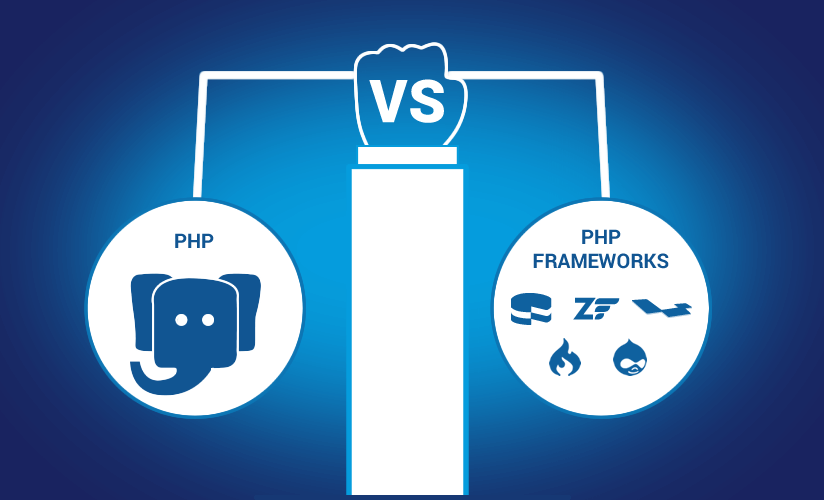A Comprehensive Guide to Building a Data-Driven Organization with Power BI

Are you ready to unlock the true potential of your organization’s data? In today’s data-driven world, businesses that can effectively harness the power of data gain a significant competitive advantage. Power BI, Microsoft’s powerful business intelligence tool, offers a comprehensive suite of features and functionalities to transform your organization into a data-driven powerhouse. This guide is your roadmap to success, providing step-by-step insights and strategies to build a data-driven organization using Power BI.
In this digital era, data is the fuel that drives business growth and innovation. By leveraging Power BI’s capabilities, you can make sense of complex data, discover hidden patterns, and extract valuable insights that lead to informed decision-making. Whether you’re a small startup or a large enterprise, the principles and strategies outlined in this guide will empower you to harness the full potential of Power BI and unlock the transformative power of data.
Throughout this guide, we will explore each essential step in building a data-driven organization with Power BI. From defining your data strategy and integrating and preparing your data to create interactive dashboards and reports, implementing data analysis and exploration, and collaborating and sharing insights, we will equip you with the knowledge and tools needed to navigate the data-driven landscape successfully.
Are you ready to embark on this data-driven journey? Get ready to unleash the full potential of your data and drive your business to new heights of success!
Step 1: Define your Data Strategy:
Building a data-driven organization starts with a clear understanding of your goals and objectives. Begin by identifying the key metrics and performance indicators that align with your business objectives. Establish data governance policies, define data sources, and determine the processes and tools required to collect, store, and analyze data effectively. A well-defined data strategy will lay the foundation for success.
To build a data-driven organization, follow these key steps in defining your data strategy:
Identify Goals and Objectives:
- Clearly define your organization’s goals and objectives, such as increasing sales, improving operational efficiency, enhancing customer satisfaction, or driving innovation.
Determine Key Metrics and Performance Indicators:
- Define specific, measurable, attainable, relevant, and time-bound (SMART) metrics that align with your goals.
- Identify metrics such as revenue growth, customer acquisition rate, or average order value.
Assess Data Availability and Quality:
- Evaluate available data sources within your organization to ensure accurate insights.
- Determine the quality and reliability of the data.
- Develop a plan to improve data accuracy, completeness, and consistency if needed.
Establish Data Governance Policies:
- Set clear policies and guidelines for data collection, storage, access, and usage.
- Define roles, responsibilities, and data ownership.
- Implement data privacy and security measures to protect sensitive information.
Define Data Architecture and Infrastructure:
- Assess your current data architecture and infrastructure for any gaps or limitations.
- Develop a plan to address these gaps, considering factors such as scalability, integration capabilities, storage, and computing resources.
Develop a Roadmap:
- Create a roadmap outlining the steps and milestones of your data-driven journey.
- Identify the tools, technologies, and resources required for effective implementation.
- Consider factors like budget, timelines, and resource allocation.
Involve Stakeholders:
- Collaborate with key stakeholders, including executives, department heads, analysts, and IT teams.
- Gather input, insights, and requirements to ensure alignment with the organization’s needs.
- Create a shared understanding of the benefits and impact of a data-driven approach.
Communicate and Educate:
- Communicate the importance and benefits of the data strategy across the organization.
- Conduct training sessions and workshops to educate employees about data-driven decision-making.
- Foster a data-driven culture by emphasizing the role of data in informed decision-making.
Step 2: Data Integration and Preparation
Once you have defined your data strategy, the next step in building a data-driven organization is data integration and preparation. To unlock the full potential of Power BI, you need to integrate and prepare your data.
Power BI supports a wide range of data sources, including databases, cloud services, spreadsheets, and more. Connect to your data sources, extract the necessary information, and transform it into a format that Power BI can work with.
This step focuses on bringing together data from various sources and preparing it for analysis using Power BI. Follow these essential steps to ensure a seamless data integration and preparation process:
Identify Data Sources:
- Identify the relevant data sources within your organization, including databases, cloud services, spreadsheets, and more.
- Consider both internal and external data sources that contain valuable insights related to your business objectives.
Connect to Data Sources:
- Utilize Power BI’s wide range of connectors to establish connections with your data sources.
- Leverage the built-in connectors for popular databases, cloud platforms, and third-party applications.
- Configure the connection settings, such as server credentials, API keys, or authentication methods.
Extract and Transform Data:
- Extract the necessary data from your sources using Power BI’s data extraction capabilities.
- Define the queries, filters, and transformations required to retrieve the relevant data.
- Utilize Power Query, a powerful data transformation tool in Power BI, to clean, reshape, and structure your data.
Handle Data Quality Issues:
- Address any data quality issues during the data preparation phase.
- Identify and handle missing values, duplicates, inconsistencies, and outliers.
- Apply data cleansing techniques, such as filtering, deduplication, and data validation, to ensure data accuracy.
Merge and Combine Data:
- If you have multiple data sources, merge and combine them into a single dataset for comprehensive analysis.
- Define relationships between different data tables to establish connections and enable cross-table analysis.
- Use Power BI’s data modeling capabilities to create relationships, define hierarchies, and enrich the dataset.
Standardize Data Formats:
- Ensure consistent data formats across your dataset to avoid discrepancies during analysis.
- Standardize data types, units of measurement, and naming conventions to maintain data integrity.
- Utilize Power BI’s formatting options to apply consistent formatting to your data fields.
Refresh and Automate Data Updates:
- Set up scheduled data refreshes to keep your data up-to-date in Power BI.
- Define refresh intervals based on the frequency of data updates in your data sources.
- Automate the data refresh process to eliminate manual intervention and ensure the availability of real-time insights.
Step 3: Create Interactive Dashboards and Reports
Once your data is integrated and prepared, the next step in building a data-driven organization is to create interactive dashboards and reports using Power BI.
Power BI’s strength lies in its ability to create stunning visualizations that bring data to life. Utilize the intuitive interface to design interactive dashboards and reports that convey insights effectively.
Leverage a variety of visualization options such as charts, graphs, maps, and tables to present your data in a meaningful and engaging manner. Power BI’s drag-and-drop functionality and pre-built templates make this process accessible to users of all skill levels.
These dashboards and reports provide a visually appealing and user-friendly way to explore and analyze your data. Follow these steps to create compelling and insightful visualizations:
Identify Key Metrics and Visualizations:
- Determine the key metrics and insights that are important for your organization’s goals.
- Identify the most effective visualizations to represent the data, such as charts, graphs, tables, and maps.
- Consider the target audience and their preferences for data presentation.
Design a Logical Dashboard Structure:
- Plan the layout and structure of your dashboard, organizing it logically and intuitively.
- Group related visuals together and arrange them in a way that tells a cohesive data story.
- Consider the flow of information and how users will navigate and interact with the dashboard.
Create Visualizations and Reports:
- Use Power BI’s intuitive drag-and-drop interface to create visualizations and reports.
- Select the appropriate visualizations for each data set, choosing from a wide range of options available in Power BI.
- Customize the visuals by adjusting properties, colors, labels, and formatting to enhance clarity and visual appeal.
Add Interactivity and Filters:
- Enhance the user experience by adding interactivity to your dashboards.
- Incorporate filters, slicers, and drill-through options to allow users to explore the data from different perspectives.
- Enable dynamic filtering and data selection to provide personalized and relevant insights.
Utilize Power BI’s Advanced Features:
- Take advantage of advanced features in Power BI to enhance your dashboards and reports.
- Leverage functionalities like bookmarks, tooltips, drill-through actions, and custom visuals to create engaging and interactive experiences.
- Incorporate Power BI’s natural language querying capabilities to allow users to ask questions and receive instant responses.
Ensure Data Accuracy and Consistency:
- Double-check the accuracy and consistency of your visualizations and reports.
- Validate the data displayed against the original data sources to ensure data integrity.
- Regularly review and update the visualizations as new data becomes available.
Test and Iterate:
- Test the dashboards and reports with a sample group of users to gather feedback and identify areas for improvement.
- Iterate and refine the visualizations based on user feedback, ensuring they meet the needs and expectations of the users.
Step 4: Implement Data Analysis and Exploration
Now that you have your data visualized, it’s time to dive deeper and extract actionable insights. Power BI provides a range of analytical capabilities, including data modeling, advanced calculations, and the ability to create custom measures. This step focuses on leveraging the analytical capabilities of Power BI to gain deeper insights and make informed decisions. Follow these steps to effectively analyze and explore your data:
Define Analytical Objectives:
- Clearly define the objectives of your data analysis and exploration.
- Identify the questions you want to answer and the insights you want to gain from your data.
Utilize Power BI’s Analytical Tools:
- Leverage Power BI’s built-in analytical tools and features to explore and analyze your data.
- Use functions and calculations to derive new metrics and measures based on your data.
- Apply advanced analytics techniques such as clustering, forecasting, or regression analysis if applicable.
Perform Ad-Hoc Analysis:
- Empower users to perform ad-hoc analysis by providing them with self-service capabilities in Power BI.
- Enable users to slice and dice the data, apply filters, and create custom visualizations to explore specific aspects of the data.
- Encourage users to ask questions and find answers on their own using Power BI’s intuitive interface.
Implement Data Modeling:
- Enhance the data model in Power BI to support complex analysis and relationships between data tables.
- Create calculated columns and measures to perform calculations and aggregations on the data.
- Utilize Power BI’s modeling capabilities to define hierarchies, implement row-level security, and apply data transformations.
Apply Data Mining Techniques:
- Apply data mining techniques to uncover patterns, trends, and correlations in your data.
- Utilize Power BI’s machine learning capabilities or integrate with external machine learning models to perform predictive analysis.
- Use data mining algorithms to discover hidden insights and make data-driven predictions.
Collaborate and Share Insights:
- Foster collaboration and knowledge sharing by allowing users to annotate and share insights within Power BI.
- Enable users to create and share reports, dashboards, and individual visualizations with colleagues and stakeholders.
- Encourage discussions and decision-making based on shared insights.
Continuously Monitor and Improve:
- Monitor the performance and effectiveness of your data analysis and exploration efforts.
- Regularly review and refine your analytical models, measures, and visualizations as new data and insights become available.
- Seek feedback from users and stakeholders to identify areas for improvement and refine your analytical approach.
Step 5: Collaborate and Share Insights
Data-driven decision-making is a team effort. Power BI allows you to collaborate seamlessly with colleagues and stakeholders. Collaboration and sharing insights are crucial aspects of building a data-driven organization. In this step, we will explore how Power BI enables effective collaboration and sharing of insights across teams and stakeholders. Follow these steps to promote collaboration and maximize the impact of your data-driven efforts:
Establish Collaboration Channels:
- Set up collaboration channels within Power BI to facilitate communication and knowledge sharing.
- Create groups or workspaces where team members can collaborate on data analysis, reporting, and decision-making.
- Encourage open communication and active participation from all stakeholders involved in the data-driven initiatives.
Share Dashboards and Reports:
- Share your interactive dashboards and reports with relevant individuals or groups within your organization.
- Choose the appropriate sharing settings to ensure the right level of access and permissions for each recipient.
- Enable stakeholders to view, explore, and interact with the data visualizations to gain insights and make informed decisions.
Collaborative Annotation and Discussion:
- Foster collaboration by allowing users to annotate dashboards and reports with comments or discussions.
- Encourage users to provide feedback, ask questions, and engage in data-driven conversations.
- Use Power BI’s commenting or collaboration features to create a dialogue around the data and encourage collaboration among stakeholders.
Enable Data Exploration and Self-Service Analytics:
- Empower users to perform self-service analytics by providing them with the tools and resources they need.
- Encourage users to explore the data, create their reports, and share their findings with others.
- Foster a culture of data exploration and knowledge sharing by recognizing and rewarding individuals who contribute valuable insights.
Distribute Automated Reports:
- Automate the distribution of reports to stakeholders on a scheduled basis.
- Set up subscriptions or email notifications to deliver reports to the right individuals at the right time.
- Ensure that stakeholders stay informed and up-to-date with the latest insights without manual intervention.
Collaborate Across Teams and Departments:
- Break down silos by promoting cross-functional collaboration and knowledge sharing.
- Encourage collaboration between different teams and departments by sharing relevant dashboards and reports.
- Foster a collaborative environment where insights from one team can inform and benefit others.
Monitor Usage and Collect Feedback:
- Monitor the usage of shared dashboards and reports to understand their impact and effectiveness.
- Collect feedback from users to identify areas for improvement and address any usability or functionality concerns.
- Continuously iterate and refine your shared insights based on user feedback and evolving business requirements.
Provide Training and Support:
- Offer training and support to users to ensure they can effectively collaborate and share insights using Power BI.
- Conduct workshops or webinars to educate users on best practices for collaboration and utilizing Power BI’s collaboration features.
- Provide resources such as user guides, tutorials, or a dedicated support channel to assist users with any questions or challenges.
Establish Governance and Security:
- Implement governance policies and security measures to protect sensitive data while enabling collaboration.
- Define roles and permissions to ensure the right level of access to dashboards and reports.
- Enforce data privacy and compliance regulations to maintain data integrity and security.
Step 6: Monitor and Optimize Performance
Building a data-driven organization is an ongoing process. Continuously monitor the performance of your data models, dashboards, and reports. Gather feedback from users and stakeholders to identify areas for improvement.
Power BI provides robust monitoring and analytics capabilities that help you track usage, identify popular reports, and understand user behavior. Use these insights to optimize and refine your data-driven initiatives.
Follow these steps to effectively monitor and optimize the performance of your data-driven organization using Power BI:
Define Key Performance Indicators (KPIs):
- Identify the key metrics and KPIs that align with your organization’s objectives.
- Define clear and measurable KPIs that reflect the success and impact of your data-driven initiatives.
- Ensure that the KPIs are relevant, actionable, and aligned with your business goals.
Establish Performance Baselines:
- Establish baseline metrics and benchmarks to measure the initial performance of your data-driven initiatives.
- Use historical data and industry standards to set realistic expectations and targets.
- Capture the current state of performance to serve as a reference point for future evaluations.
Implement Monitoring and Alerting Systems:
- Set up monitoring and alerting systems to track the performance of your data-driven initiatives in real time.
- Utilize Power BI’s monitoring capabilities to create dashboards and reports that provide insights into key metrics.
- Set up automated alerts and notifications to be alerted of any significant deviations or anomalies in performance.
Conduct Regular Performance Reviews:
- Conduct regular performance reviews to evaluate the effectiveness and impact of your data-driven initiatives.
- Analyze the key metrics and KPIs to assess performance against established targets and benchmarks.
- Identify areas of improvement and take proactive measures to address any performance gaps.
Optimize Data Models and Queries:
- Continuously optimize your data models and queries to improve performance.
- Evaluate and streamline your data models to eliminate unnecessary complexity and enhance query performance.
- Optimize queries by leveraging Power BI’s query folding, indexing, and caching techniques.
Improve Data Quality and Integrity:
- Place a strong emphasis on data quality and integrity to ensure reliable and accurate insights.
- Regularly audit and cleanse your data sources to identify and address any data quality issues.
- Implement data validation processes and checks to prevent inconsistencies and errors.
Enhance Visualization and User Experience:
- Continuously improve the visualizations and user experience of your Power BI dashboards and reports.
- Solicit feedback from users to identify areas for improvement in terms of visual clarity, ease of navigation, and interactivity.
- Apply best practices for data visualization, such as using appropriate chart types, color schemes, and labeling.
Monitor User Adoption and Engagement:
- Monitor user adoption and engagement with Power BI to gauge the effectiveness of your data-driven initiatives.
- Track user activity, such as dashboard views, report interactions, and data exploration, to measure user engagement.
- Use this data to identify opportunities for training, support, and further improvements to drive user adoption.
Stay Updated with Power BI Enhancements:
- Stay informed about the latest updates and enhancements in Power BI.
- Regularly explore new features, capabilities, and best practices offered by Power BI to leverage its full potential.
- Incorporate new functionalities and enhancements into your data-driven initiatives to stay ahead of the curve.
It’s a Wrap:
Embracing a data-driven approach has become imperative for organizations striving to stay competitive in today’s rapidly evolving business landscape. Power BI offers a comprehensive suite of tools that empower businesses to become truly data-driven. By following the steps outlined in this guide, you can lay a solid foundation for building a data-driven organization, unleashing the true power of your data, and driving growth and success.
Remember, building a data-driven organization is not just about technology; it’s a cultural shift that requires collaboration, a clear strategy, and a commitment to continuous improvement. With Power BI as your ally, you have the tools you need to transform your organization into a data-driven powerhouse.
Similar Posts

Mastering Shopify SEO in 2024: Proven Strategies for E-commerce Success
Are you struggling to make your Shopify store stand out in the crowded online marketplace? Do you wonder how some e-commerce businesses effortlessly attract droves of customers while others struggle to gain traction? In the fast-paced world of 2024, where competition is fierce and algorithms are constantly changing, mastering Shopify SEO (Search Engine Optimization) has […]...

Core PHP vs PHP Frameworks
PHP has been a cornerstone of web development for a long time. The LAMP stack (Linux, Apache, MySQL, and PHP) is still a frequently used part of web development, and it is something that people tend to learn in computing courses in college. Today, there are many other frameworks that web applications can be built […]...

Scaling React.js Applications: Architectural Patterns and Performance Optimization
Are you struggling to keep your React.js application running smoothly as it grows in size and complexity? Do you face performance bottlenecks and wonder how to handle an ever-expanding user base? Fear not, for we have the perfect solution to your scaling woes! Welcome to our comprehensive blog on “Scaling React.js Applications: Architectural Patterns and […]...







